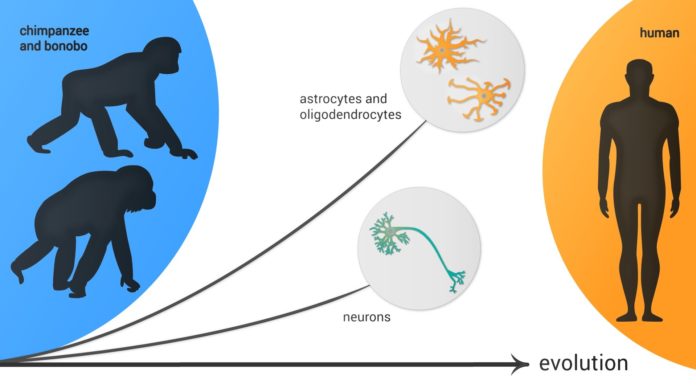By studying gene expression in 33 different brain regions of humans, chimpanzees, macaques, and bonobos, scientists at the Skoltech have created a map of the different brain regions with their specific cell structures. This brain map is expected to help in human evolution research.
For the study of gene expressions, scientists used single-cell-resolution transcriptomics technologies. They studied 422 brain samples taken from 33 different brain regions in humans, chimpanzees, macaques, and bonobos.
Scientists specifically observed gene expression focusing on how specific genes operated in those regions and analyzed a total of 88,047 individual cells. They identified the brain regions that are the most distinctive in humans and, therefore, undergo faster evolution. These include the cerebral cortex, hypothalamus, and cerebellar gray and white matter.
Also, oligodendrocytes and astrocytes displayed more differences in the human evolutionary lineage than neurons as compared to similar cells in other primates.
Ekaterina Khrameeva, the first author of the paper and an assistant professor at the Skoltech Center for Life Sciences (CLS), said, “We are not the first to look into gene expression in the brain. This is an important area of research that someday will shed more light on how human consciousness appeared.”
“However, the tricky point here is that there can be two possible reasons for evolutionary changes in expression: a change in the cellular structure in some area of the brain or a change in the expression of genes in the cells.”
“Previously, scientists could not draw the line between these two possibilities, and now, with the advanced single-cell-resolution method, we finally did it! Our new findings will help better understand the ins and outs of the evolution of gene expression on a more subtle level that was unavailable until now.”
The study also involved the participation of an international group of scientists from Russia, China, Germany, and Switzerland led by Philipp Khaitovich, a professor at the Skoltech Center for Neurobiology and Brain Restoration (CNBR).
Journal Reference:
- Philipp Khaitovich et al., Single-cell-resolution transcriptome map of human, chimpanzee, bonobo, and macaque brains. DOI:10.1101/gr.256958.119
